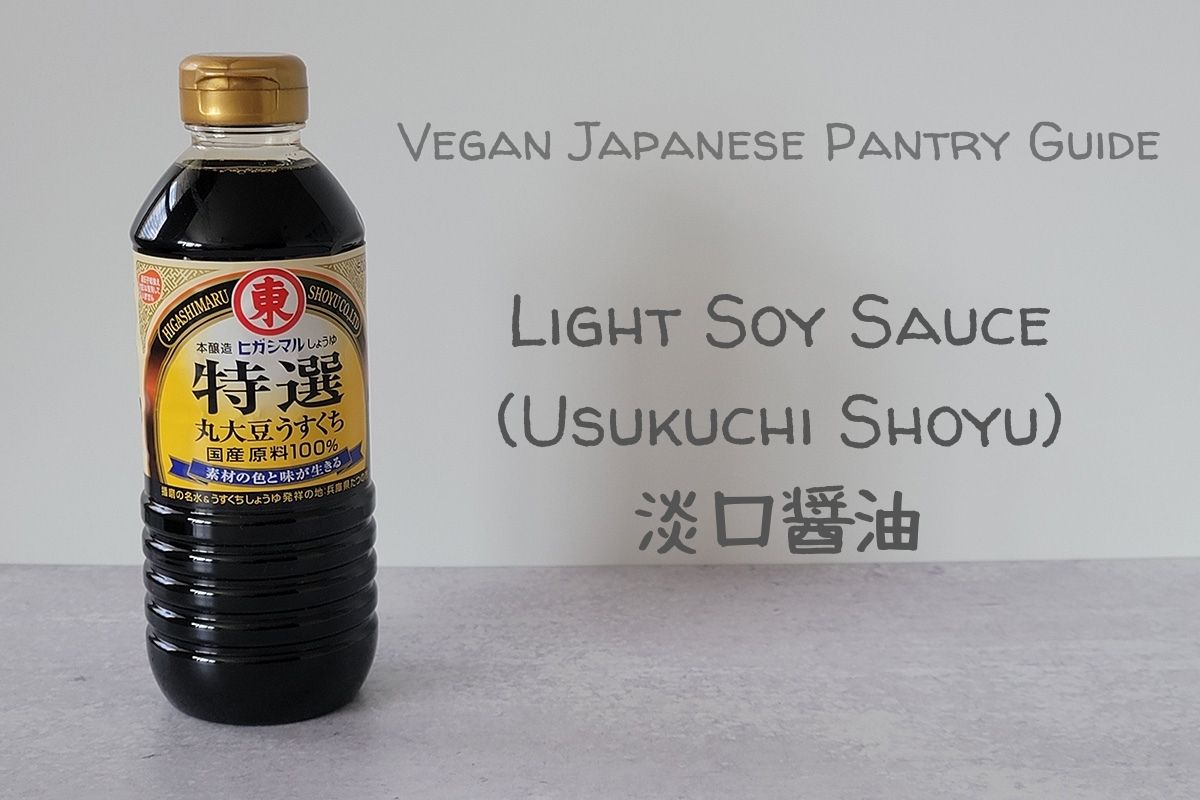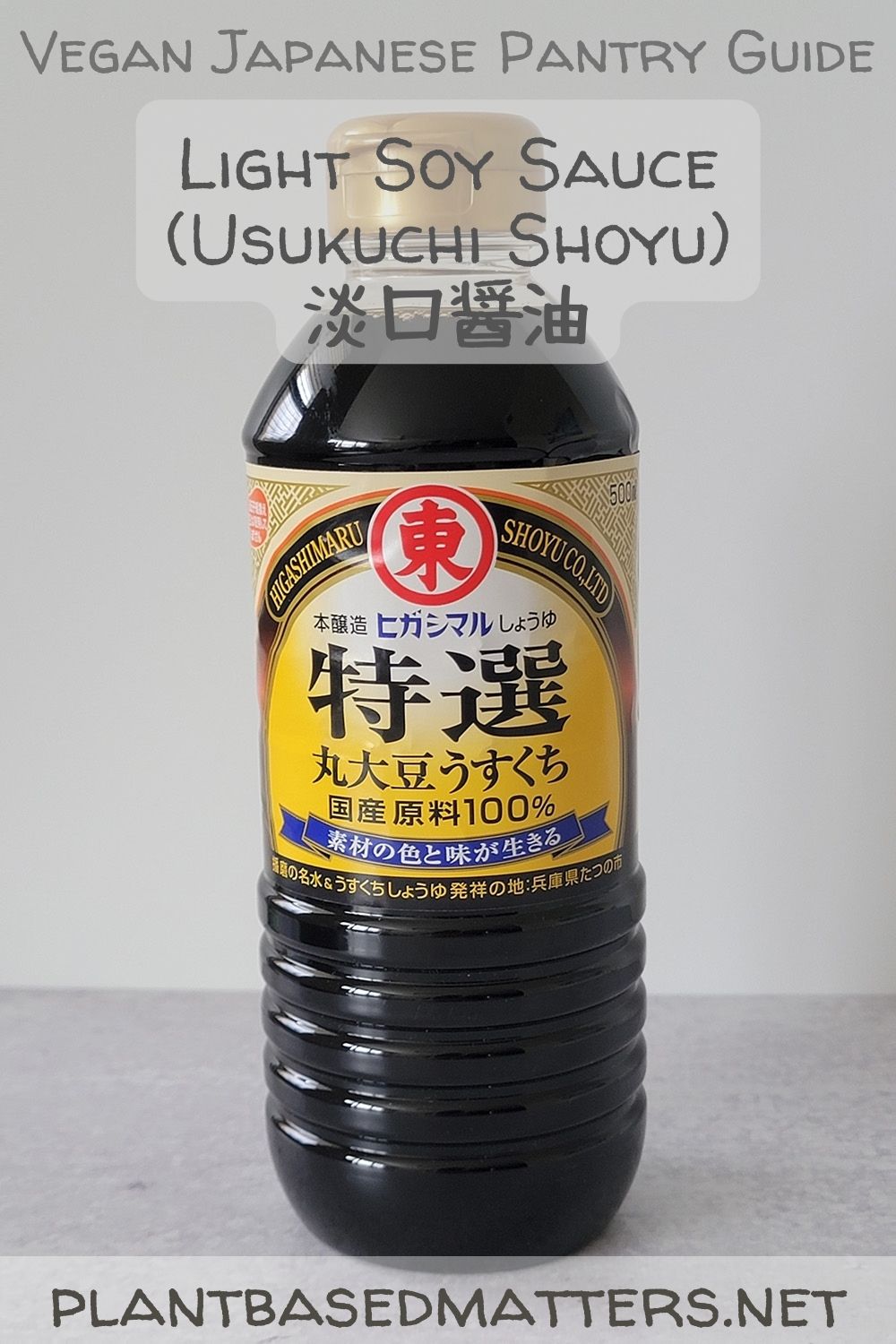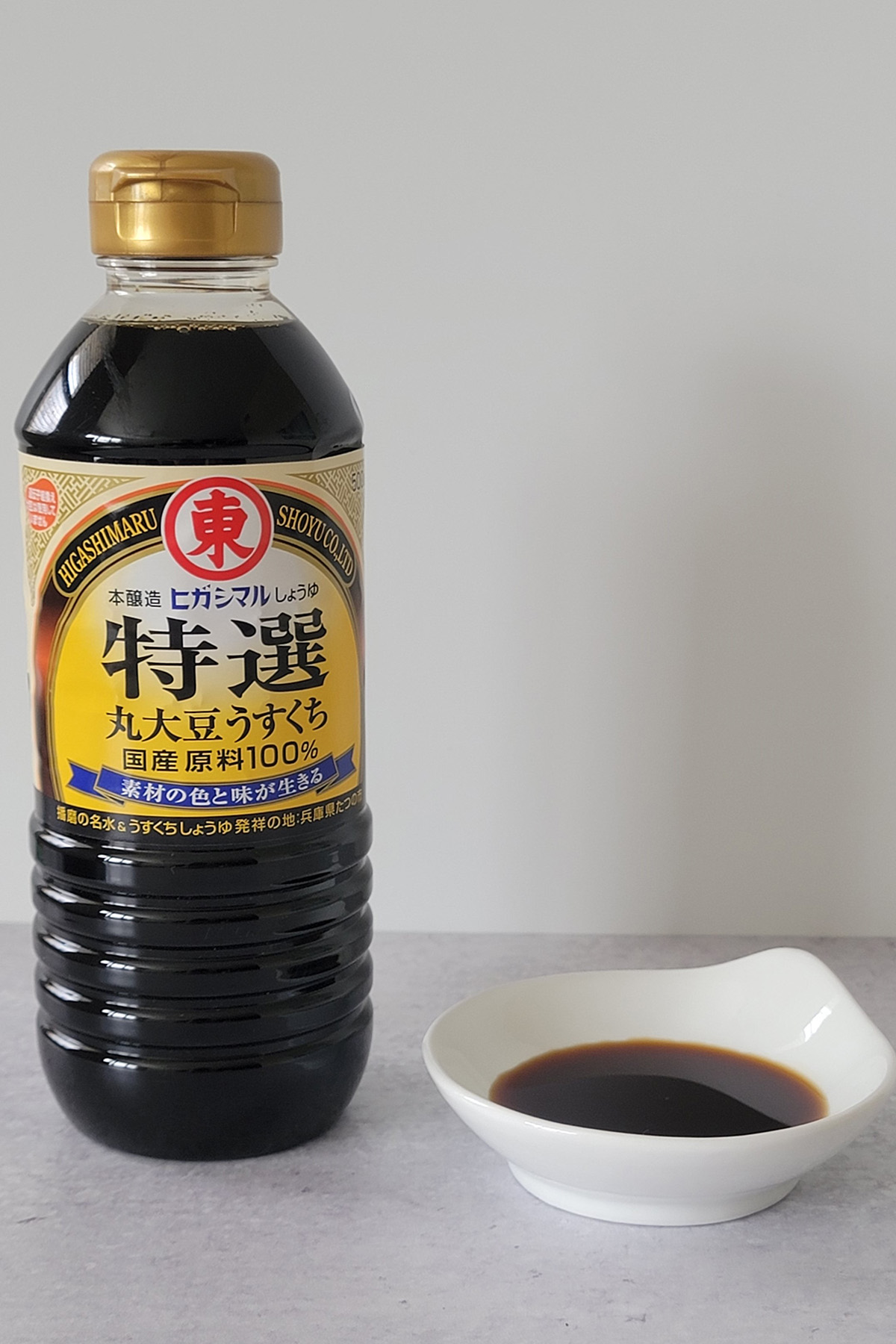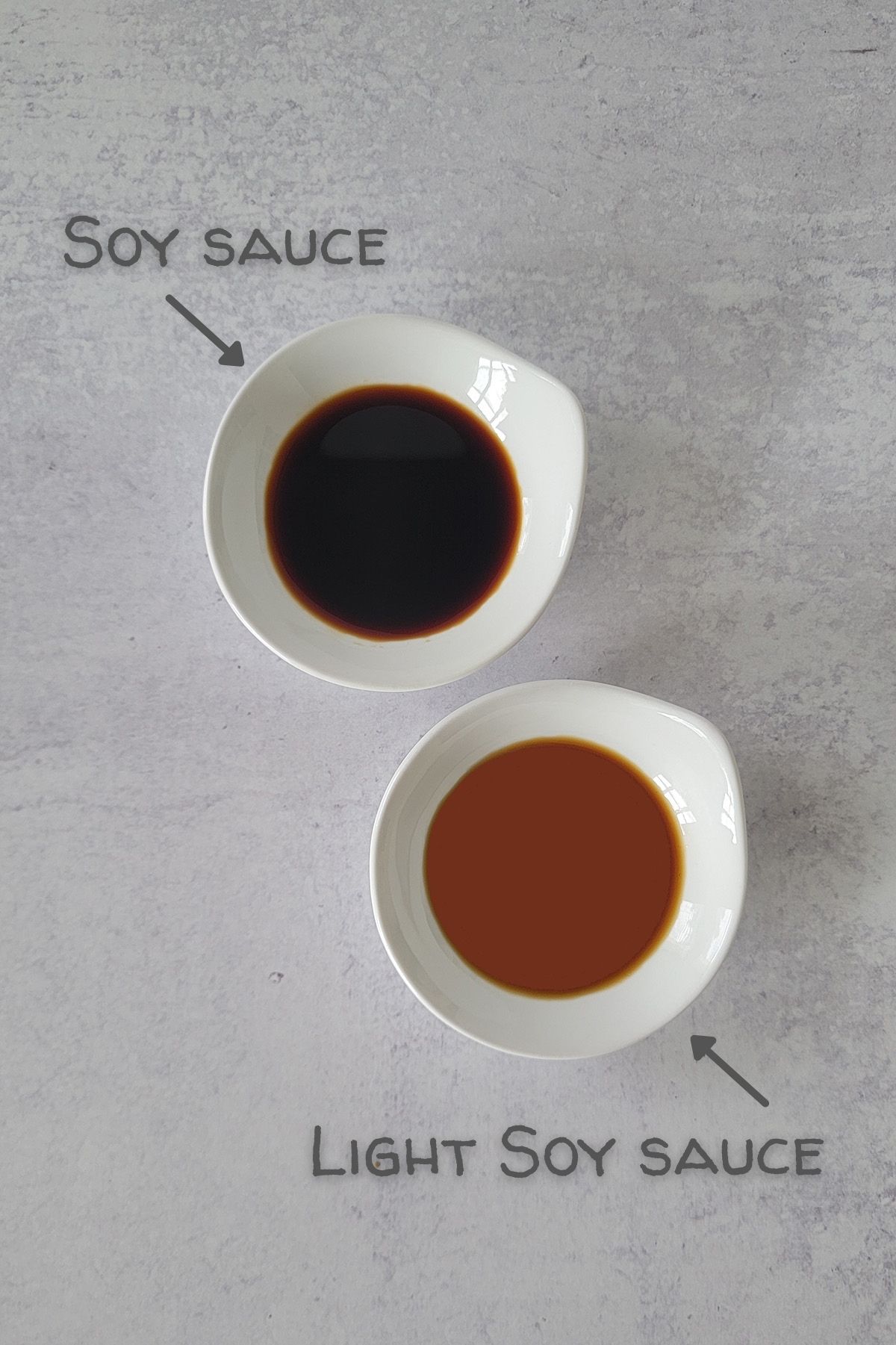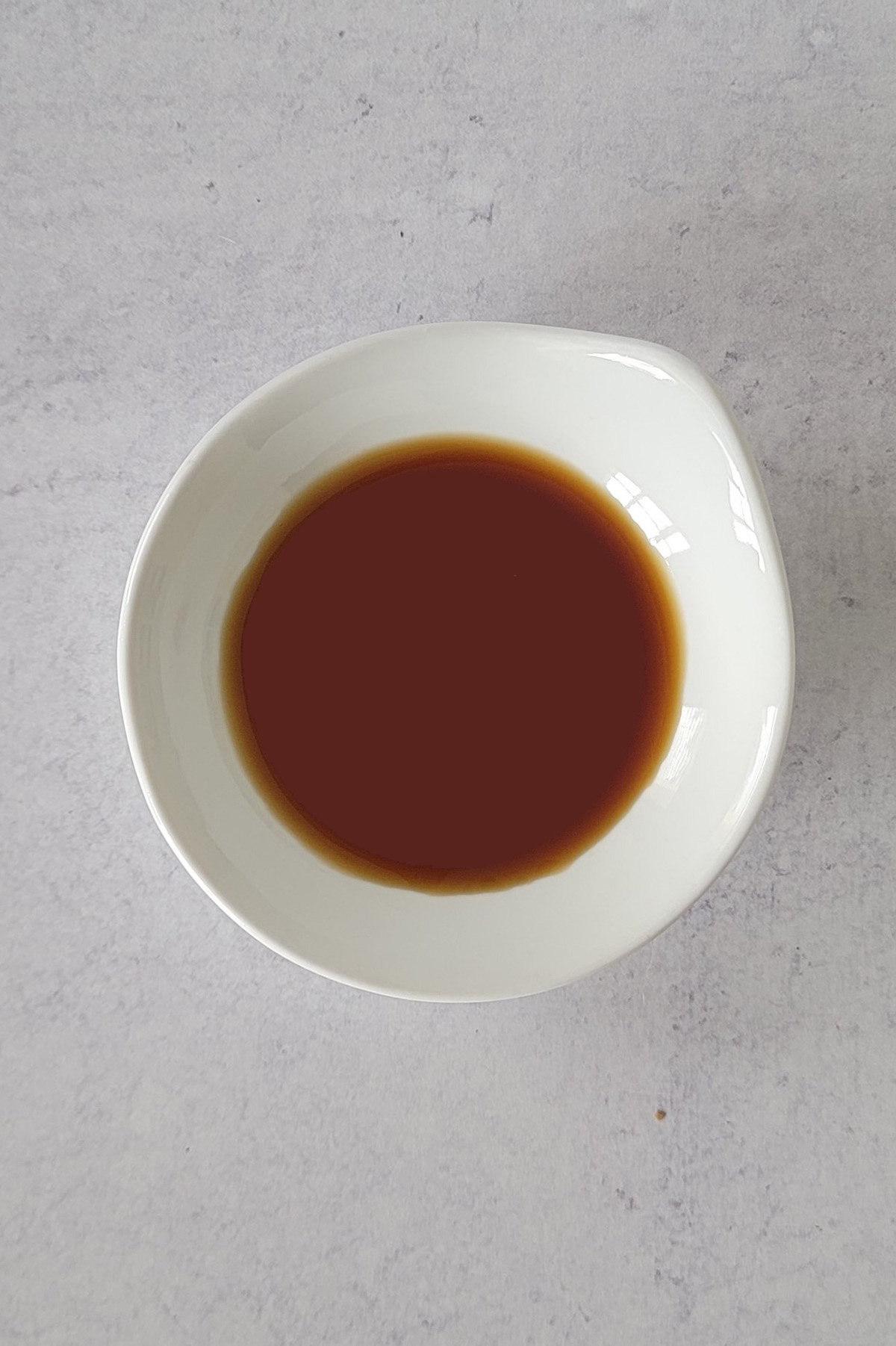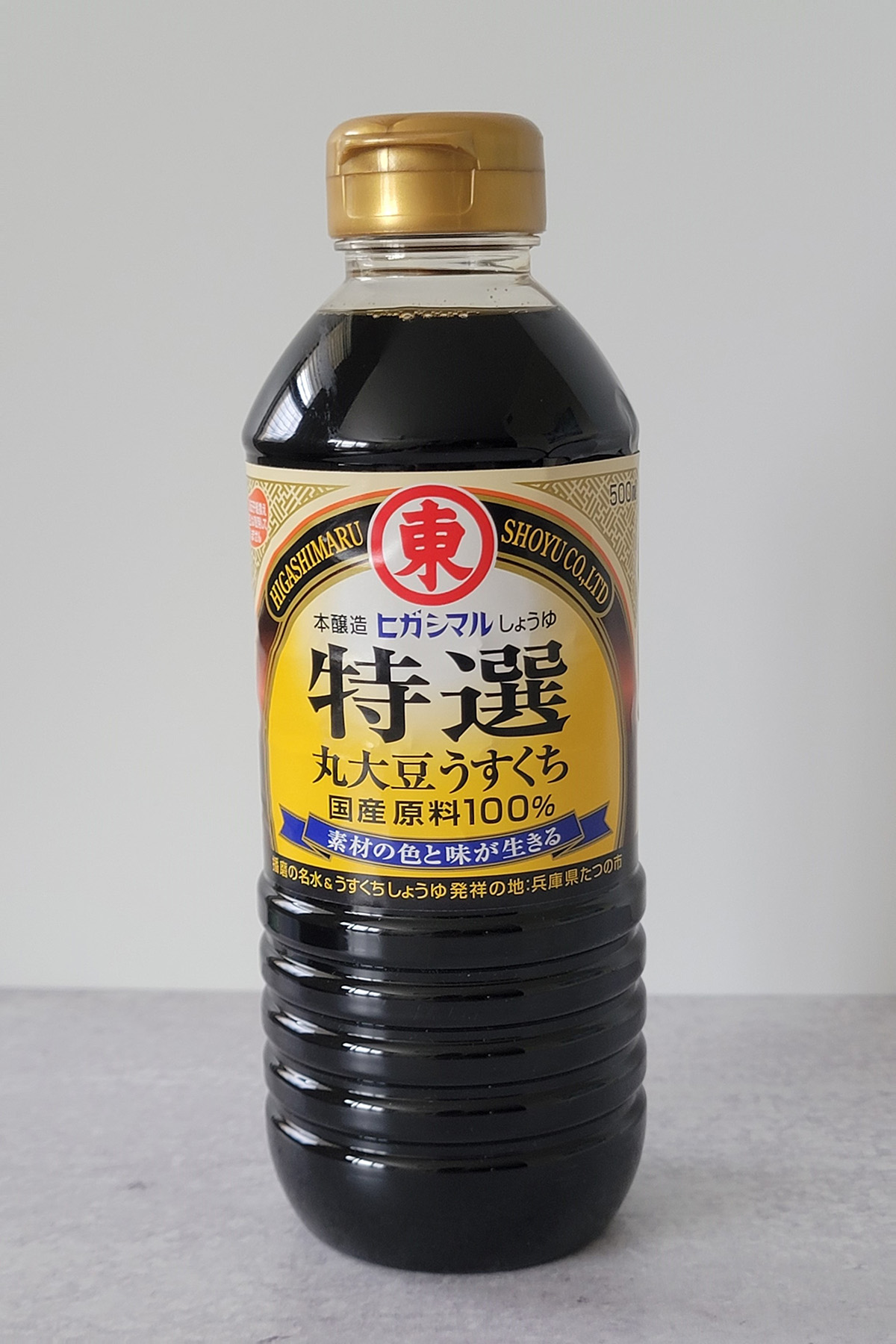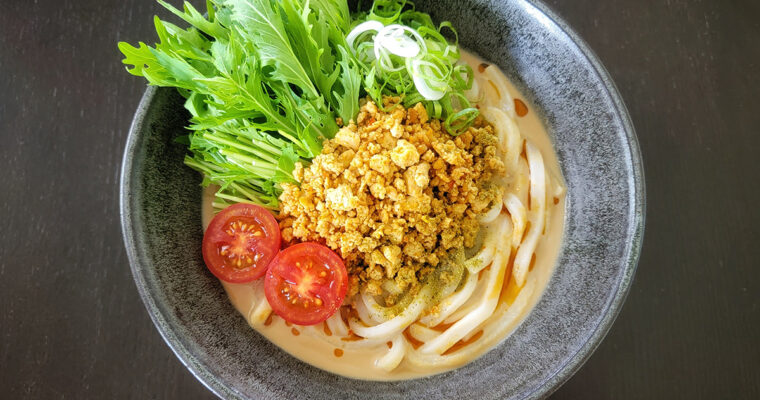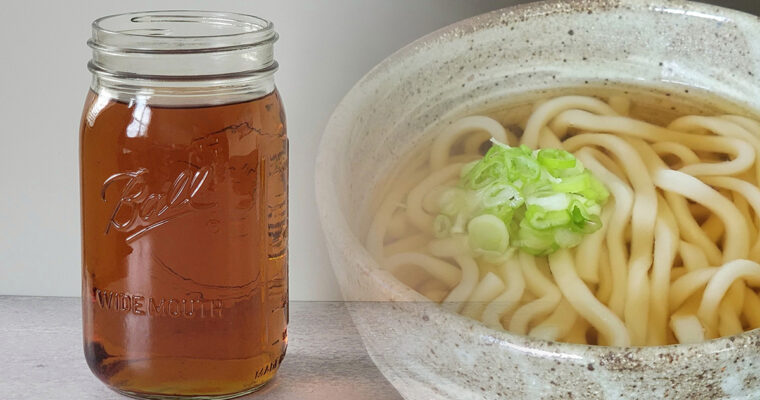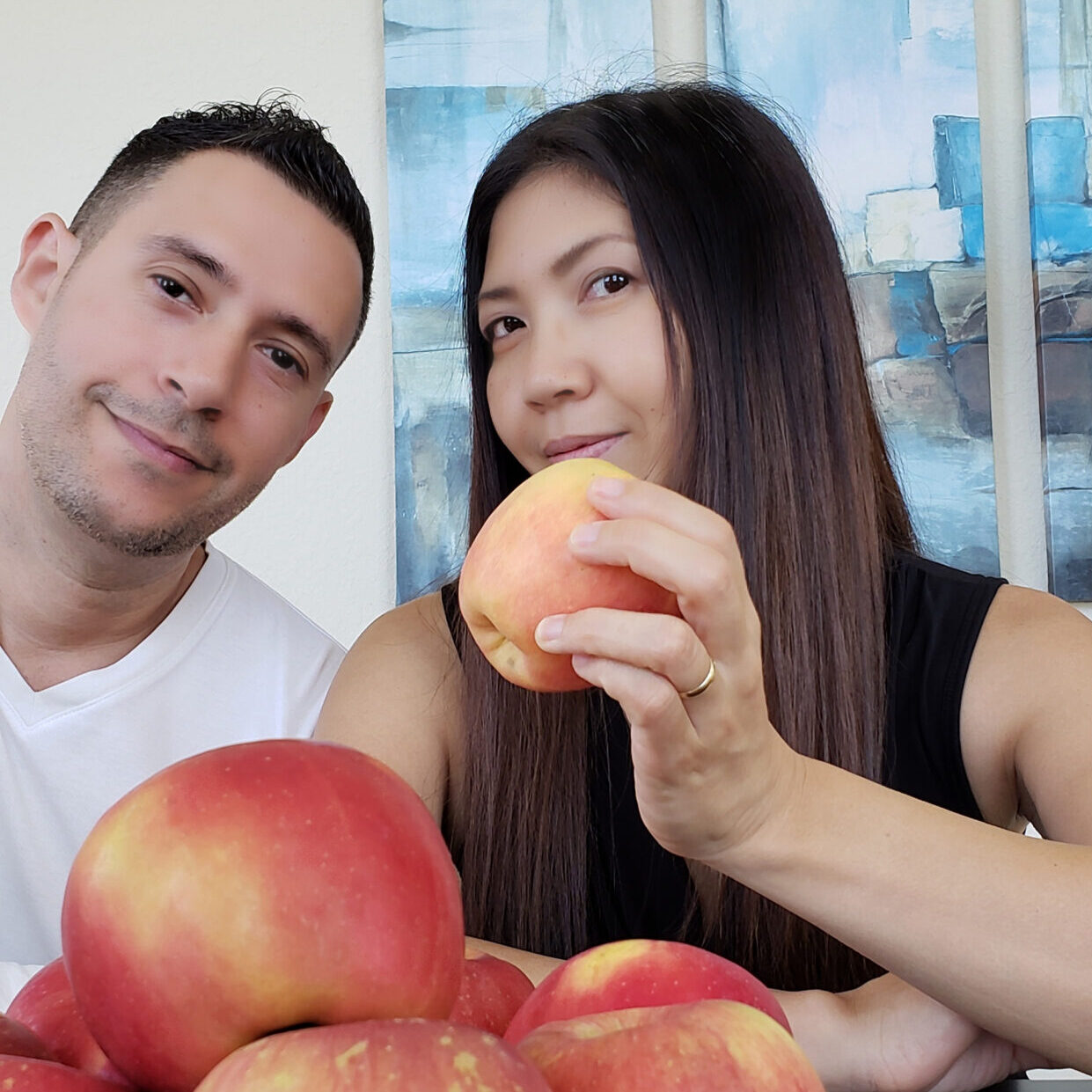Last Updated on January 19, 2022
There are a couple of different types of soy sauce you may want to have in your vegan Japanese pantry and Light Soy Sauce (Usukuchi Shoyu) is one of them. It’s serves a different purpose than the regular soy sauce.
What’s Light Soy Sauce?
Overview
Soy sauce is a aged & fermented liquid condiment made from soybeans that’s commonly used in Japanese cuisine as well as many Asian countries. Light Soy sauce also belongs to the same family as the typical multipurpose soy sauce. In Japanese, it’s called usukuchi shoyu [淡口醤油] to differentiate from the typical soy sauce known as shoyu [醤油.]
The color of light soy sauce lighter than the regular soy sauce. It’s typically aged for about six months or less which is shorter than the making of regular soy sauce. Despite of the name, the percentage of sodium in light soy sauce is about 18 % which is higher than regular soy sauce which is about 16 %.
Ingredients
The basic ingredients of light soy sauce are:
- Soybeans
- Water
- Wheat
- Salt
- Koji (aspergillus oryzae)
- Rice *
Process
Brief process of the making of soy sauce is;
- Soybeans are soaked and steamed
- #1 is mixed with crushed dry-roasted wheat and koji mold (aspergillus oryzae)
- Salted water is added to #2 which becomes unrefined soy sauce called moromi then aged/fermented
- # 3 is blended with amazake (sweet sake made of rice koji) *
- Pressed and heated for pasteurization then filtered or just filtered without pasteurization **
- Bottled
The actual process may vary depending on the types of light soy sauce or products.
The differences in the process of making light soy sauce and regular soy sauce are:
- Less aged/fermented
- It has more salt which prompts slower fermentation
- The use of amazake (sweet sake made of rice koji) for the mellow taste
* The use of rice is to make amazake (sweet sake made of rice koji) which is a traditional way to add a natural sweetness to balance out the flavor of light soy sauce. However, you may want to be aware that in the modern day productions, many light soy sauce products have high fructose corn syrup or added amino acid (can be animal derived or plant derived) as an alternative.
* Typically, light soy sauce is heated through to pasteurize after the being pressed except for “pure light soy sauce”, “fresh light soy sauce” or “mana light soy sauce.” Those are the types of light soy sauce with no heat applied. In other words, the light soy sauce is “alive” to retain more aroma and umami, enzymes, and the pure taste of light soy sauce. It’s delicious!
Taste
The taste of light soy sauce is salty with less bold soy sauce taste in the background in comparison to regular soy sauce. Unlike the regular soy sauce, it doesn’t have the strong punch or a deep aroma but it’s slightly saltier!
Because of the mellow color and the lighter flavor and the aroma, light soy sauce is a perfect match with kombu dashi. Light soy sauce can complement the subtle flavor and the aroma of kombu dashi very well.
Light Soy Sauce vs Low Sodium Soy Sauce
The word “Light” soy sauce can be confusing. Is light soy sauce the same thing as low sodium soy sauce? The answer is…No!
Light soy sauce ≠ Low sodium soy sauce
People are often confused by those two products. They aren’t the same thing! As mentioned, light soy sauce has higher sodium content even more than regular soy sauce! The word “light” refers to the color not for the the level of sodium content.
On the other hand, low sodium soy sauce is, as the words imply, the same as regular soy sauce made with less sodium.
How to Use
Unlike regular soy sauce, light soy sauce is mainly for cooking while you could still use as a table soy sauce for dipping & drizzling condiment.
The main reason you want to consider using light soy sauce is to give the soy sauce taste without changing the color of the food to make it darker. In other words, you’re able to retain the natural color & the appearance of the ingredients.
Light soy sauce is popular amongst the kansai region, the western part of the main island of Japan, such as Osaka and Kyoto. Especially in Kyoto where you find restaurants that serve kaiseki-ryori (a traditional/formal multi-course Japanese meal), light soy sauce the alternative to the regular soy sauce.
Why? Because kaiseki-ryori features seasonal ingredients that are minimally processed, cooked and prepared by the chefs. The part of the joy to enjoy kaiseki-ryori is to eat with eyes and to appreciate the taste as natural as possible.
Good news is that you don’t have to be a chef to properly use light soy sauce!
I use light soy sauce in some of my favorite recipes below!
[envira-gallery id="8725"]
You can see that the color of udon noodles remain white in the delicious vegan broth because of the light soy sauce! I make kombu dashi based Japanese udon noodles with light soy sauce. As mentioned, light soy sauce doesn’t overpower the mild flavor of kombu dashi. They complement each other very well.
In general, I suggest incorporating light soy sauce when you cook lighter color ingredients or broth such as:
- Daikon radish
- Potatoes
- White rice
- Tofu
- Shoyu ramen broth
- Udon broth
- Clear soup
If you’ve ever thought the color of food on the plate is not so appealing, try using light soy sauce next time to see the difference!
How to Store
Similar to regular soy sauce, light soy sauce is high in sodium so it has a pretty long shelf life. That said, oxidization will slowly change the flavor profile. Just like any other food, it’s best to consume as soon as possible once it’s open.
Another thing to consider is by a small size bottle if you don’t use it often in your cooking. This may not be cost effective but there is nothing like having a fresh tasting ingredient to cook with rather than being forced to use an old one.
Since light soy sauce is not a table soy sauce, I keep in the same bottle as I purchase and simply store in the fridge. Use as needed directly from the bottle.
Where to Buy
While regular soy sauce is widely available, you may not be able to find light soy sauce easily in your typical neighborhood grocery stores. However, you have better chances at Asian grocery stores (especially Japanese grocery stores if there are any in your area.)
If you care about what you intake in your body, I recommend finding the one without high fructose corn syrup or amino acid. I haven’t been able to find a good organic light soy sauce however, I use a decent quality, non-GMO light soy sauce.
The light soy sauce I buy is Premium Usukuchi Soy Sauce from Umami Insider.
It’s a product of Japan, made with 100 % Japan grown ingredients and no high fructose corn syrup or amino acid.
I recommend trying “real” Japanese light soy sauce for you to stock up your authentic vegan Japanese pantry. This is a general tip for shopping Japanese groceries or pantry items which is to get the products that labels as “Product of Japan” on the back of the package. Often times, what appears to be a “Japanese” product is actually produced in another country. Always check the label!
Let me know in the comment sections below if you have any questions or other recommendations!
